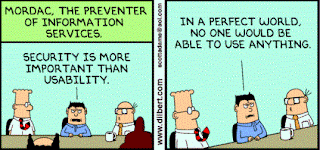Learning to Lead from Dave Leding
You don’t have
to be a CEO or Supervisor to be a leader. In an organization your leadership
will be called upon in various ways and you won’t always have a formal position
of title to accompany it. When leading your peers/co-workers there are
different styles of communication that are required. This usually depends on
the situation, team formation, and leadership role.
Dave Leding a graduate of Minnesota’s
Executive Program at the Carlson School of Management with near 20 years of
management experience spoke with communication students Wednesday 5/22/2013
about management best practices. It was an engaging and personable presentation
with lessons on Lean Management, Pros and Cons of various team forms, and
Management tips.
Probably the
biggest take-away from the whole presentation was his recognition of the Pros
and Cons to various leadership and team structures and the communication method
that follows.
Here is a brief overview.
Supervisory top-down
Description
of behaviors:
Uses direct language, explains/trains subordinates, Manages on-on-one, Contains conflict, Reacts to change
Pros: High control
and task oriented
Cons: low trust,
low morale, high degree of attention & direction needed
Participative
Description
of behaviors:
Involves employees, Solicits input for decisions, Develops individual performance, Coordinates group efforts, Resolves conflict, and Implements change.
Pros: Promotes
employees voice and engagement
Cons: slow
decision process, can de-motivate employees if their opinions/ideas are constantly
rejected.
Team Leadership
Description
of behaviors:
Builds trust and inspires teamwork, Facilitates and supports team decisions, expands team capabilities, creates a team identity, Makes the most of team diversity, Foresees and influences change
Pros: highly efficient
and proactive, more creativity
Cons: only works
with high levels of trust, employee empowerment, and proper levels of support,
authority, and resources.
They can further
be places and described by the following leadership curve. This graph explains
the leadership and communication styles necessary for varying levels of task
difficulty/ambiguity and relationship levels with followers. It also includes a
scale of readiness by the follower, which is another consideration a
leader/manager must take into consideration. So considering the department, the
task, and the relationship with the followers, a leader must choose the
appropriate type of leadership and communication style.
| Situational leadership from Project-management-skills.com |
The overarching
theme that Leding taught though is no matter the level of the task, followers
should be treated as humans, not machines. Develop a relationship of trust and
respect with employees that empowers them and yet still holds them accountable.
He proves that you can be personable and still authoritative.
He left us with
final pointers that will help any employee facing leadership responsibilities.
Take
Public Speaking
--Think
on your feet, watch the ums and ah’s, animate your voice
Listen,
listen and listen some more
--Seek
to understand before being understood
Use
common sense & common courtesy
Be
civil, but honest and open, share the good and the bad
Tell
it like it is – don’t pull any punches or you will be thought of as a ………
Trust
in your people
Tell
it, write it, tell it again, and then do it
Focus
on the behavior or issue not the person
Deal
with conflict situations fast but not out of anger
Be clear on expectations
You can connect
with him on LinkedIn and learn more about his perspective and approaches to
management. I would highly recommend him. Thank you Dave Leding for sharing your experience and advise.







